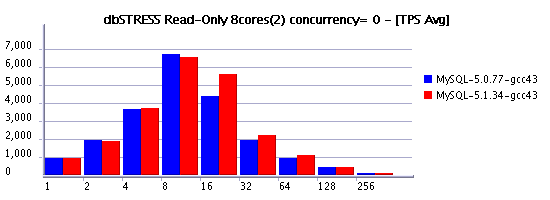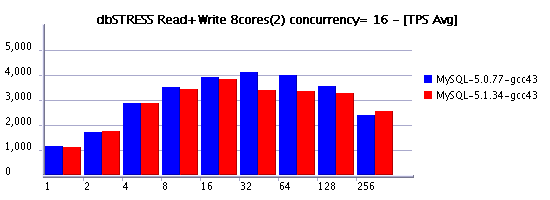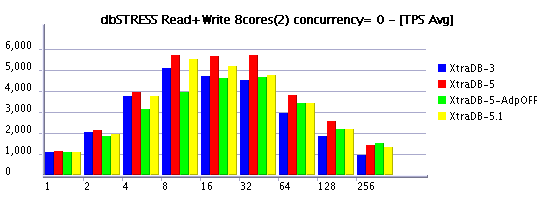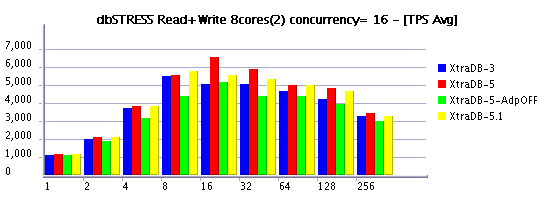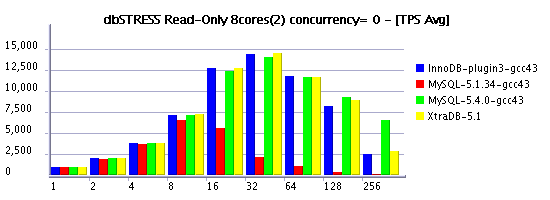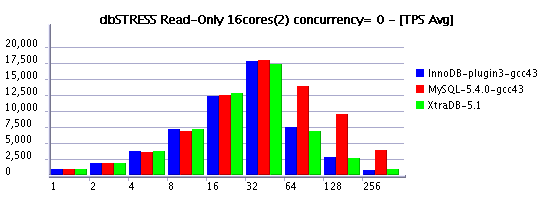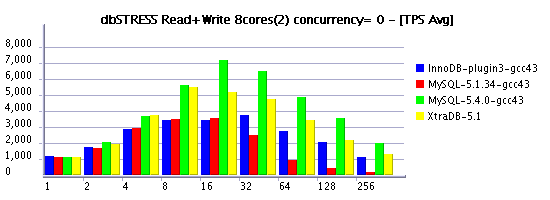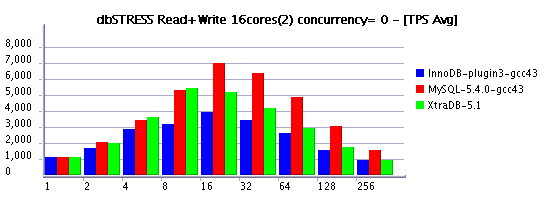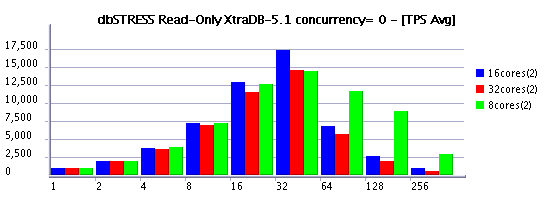| First observations |
First big surprise was to see an important TPS jump down once running XtraDB-5 with innodb thread concurrency = 16. Instead of keeping a near the top level reaching with zero concurrency as usually and then continue with a slowly decreasing TPS, it's stopping to grow on 12.000 TPS, and then decreasing slowly..Look at the following picture:
-
XtraDB-5 concurrency: 0 vs 16
XtraDB-3 concurrency: 0 vs 16
As you may see, with concurrency = 16 the top ~16.000 TPS level is not reached and stopped on 12.000 TPS. Difference in near 4.000 TPS is quite huge! 25% loss is too much. So, to avoid any unclear interpretation, I've retested it again with a second thread on CPU core disabled - the gap is still the same... (since SPARC64-VII chip mostly all workloads are running faster with a second thread enabled, but in case I found a one bad "exception" I wanted to be sure about).
Where is the problem?..
To be sure I did not dream and confirm what I saw before I retested the same case with XtraDB-3.
As you see I did not dream :-) On XtraDB-3 max TPS on concurrency = 16 is not far of max on zero concurrency, and gain on stability is not bringing any significant performance degradation.
So, I may only suppose it's related to some new code which is only active on zero concurrency, or other.. Probably folks from Percona may bring more light here.
| Adaptive Checkpoint |
As I already said in my previous report , Adaptive Checkpoint is an absolutely great feature! But reading this Vadim's post I also realized there is may be a kind of performance degradation if my test is not running log enough...Until now I saw only a better performance by enabling an Adaptive Checkpint, but this post bring me a doubt :-) And as expected to do only honest comparison, I've restarted a whole test scenario to see if there in no any gain when this option is disabled...
-
XtraDB-5 Adaptive Checkpoint: ON vs OFF
As you may see performance is better while Adaptive Checkpoint is enabled! All other cases with disabled Adaptive Checkpoint you may see from the final results labeled as "XtraDB-5-AdpOFF"
| Updated XtraDB-5 |
I did not finish my tests yet while Percona is slightly updated XtraDB-5 code. It was on time for me to test this release too. I've called it "XtraDB-5.1" to differentiate its results from original XtraDB-5 :-)



